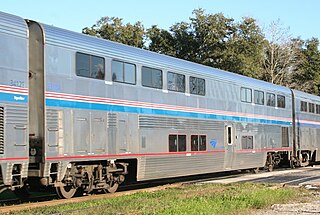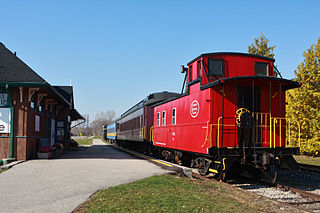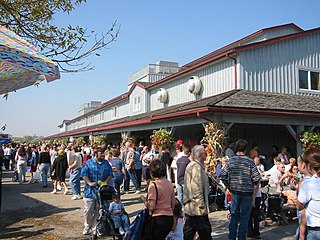
The Waterloo-St. Jacobs Railway (WSJR) was a heritage railway west of Toronto that ran between Waterloo and St. Jacobs, Ontario from 1997 to 1999.

A heritage railway is a railway operated as living history to re-create or preserve railway scenes of the past. Heritage railways are often old railway lines preserved in a state depicting a period in the history of rail transport.

Toronto is the provincial capital of Ontario and the most populous city in Canada, with a population of 2,731,571 in 2016. Current to 2016, the Toronto census metropolitan area (CMA), of which the majority is within the Greater Toronto Area (GTA), held a population of 5,928,040, making it Canada's most populous CMA. Toronto is the anchor of an urban agglomeration, known as the Golden Horseshoe in Southern Ontario, located on the northwestern shore of Lake Ontario. A global city, Toronto is a centre of business, finance, arts, and culture, and is recognized as one of the most multicultural and cosmopolitan cities in the world.

Waterloo is a city in Ontario, Canada. It is the smallest of three cities in the Regional Municipality of Waterloo, and is adjacent to the city of Kitchener.
Contents
The railway used two diesel locomotives built in the 1950s, originally owned by Canadian National Railways, and repainted them in their original paint scheme. The locomotives were named Spirit of St. Jacobs and Pride of Waterloo. It also had several passenger cars painted in the same paint scheme.

A locomotive or engine is a rail transport vehicle that provides the motive power for a train. If a locomotive is capable of carrying a payload, it is usually rather referred to as multiple units, motor coaches, railcars or power cars; the use of these self-propelled vehicles is increasingly common for passenger trains, but rare for freight.

Canadian National is a Canadian Class I freight railway headquartered in Montreal, Quebec that serves Canada and the Midwestern and Southern United States.

A passenger car is a piece of railway rolling stock that is designed to carry passengers. The term passenger car can also be associated with a sleeping car, baggage, dining, railway post office and prisoner transport cars.

Excursions had three stops, and visitors could board on a later train. The Railway allowed visitors to see farms of the Old Order Mennonites and visit the village of St. Jacobs.

Old Order Mennonites form a branch of the Mennonite tradition. Old Order are those Mennonite groups of Swiss German and south German heritage who practice a lifestyle without some elements of modern technology, who dress plain and who have retained the old forms of worship, baptism and communion.
The railway ceased operation in 2000 due to maintenance costs. In late 2006, the two diesels and three passenger cars were purchased by the West Coast Railway Association. However, as of spring 2008 the diesels and one passenger car remain in Via Rail's Mimico maintenance yard.

Founded in 1961, the West Coast Railway Association (WCRA) is a non-profit society dedicated to preserving British Columbia's railway heritage. The society operates the West Coast Railway Heritage Park located in Squamish, BC. The park is home to over 90 pieces of vintage railway equipment and is the second largest railway museum in Canada.

Via Rail Canada is an independent Crown corporation of Canada. Via Rail is mandated to operate intercity passenger rail service across the country and is subsidized by Transport Canada.


















